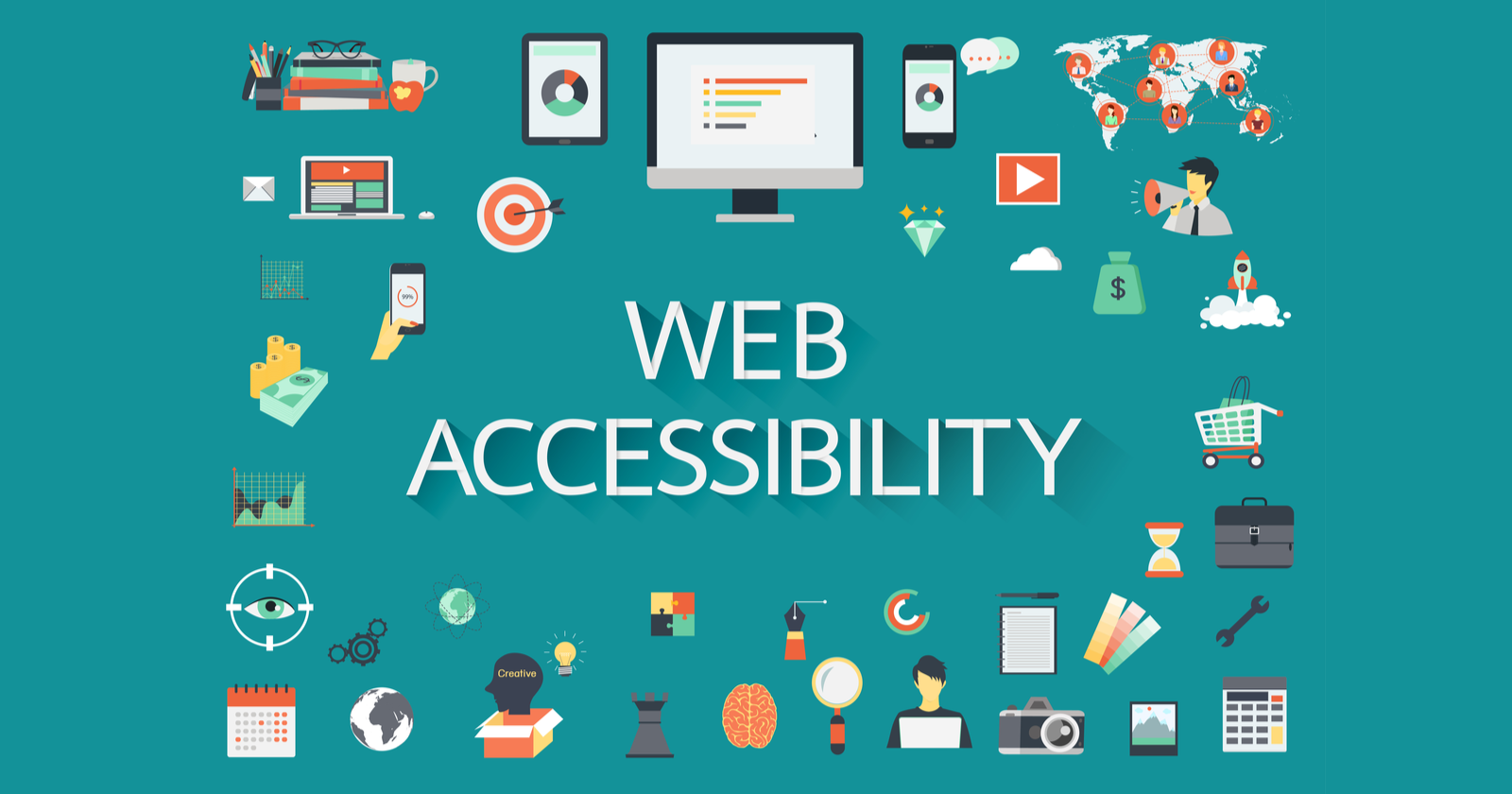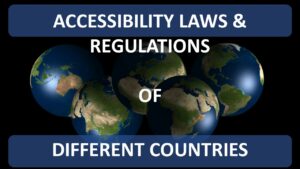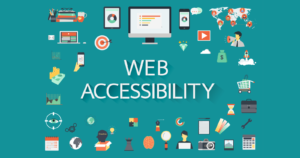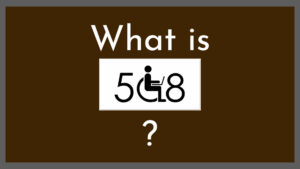
10 Things You should Keep in Mind While Making Your Website Accessible
In this digital world almost, the more website victors you get, the more business opportunities it generates. However, few take the necessary steps to ensure their website & all electronic information are available to everyone. It is absolutely vital that all your web resources should be accessible in order to provide equal access and equal opportunity to people with diverse abilities.
Accessibility isn’t difficult to implement at all. We just need to understand the underlying issues that can make a site hard or impossible to use by certain people with a certain disability. Once you identify the issues, you can take steps to avoid those mistakes and make your website welcoming to all visitors.
In this article, we’ll look at 10 things that you should keep in mind while making your website accessible.
What is Web Accessibility?
Ideally, everyone should be able to use any website on the internet. It shouldn’t be a matter of whether they have a condition that affects their ability or what aid they use to consume information. More than a billion internet users have special needs due to disabilities (temporary or permanent) and impairments that can make it difficult or even impossible for them to use certain types of websites. So, it is important that when websites and web tools are properly designed to meet all accessibility standards so that people can:
- perceive, understand, navigate, and interact with the Web
- contribute to the Web
Web accessibility encompasses all disabilities that affect access to the Web, including:
- auditory
- cognitive
- neurological
- physical
- speech
- visual
Web accessibility also benefits people without disabilities, for example:
- people use mobile phones, smartwatches, smart TVs, and other devices with small screens, different input modes, etc.
- older people with changing abilities due to aging
- people with “temporary disabilities” such as a broken arm or lost glasses
- people with “situational limitations” such as in bright sunlight or in an environment where they cannot listen to audio
- people using a slow Internet connection, or who have limited or expensive bandwidth
There is also a strong business case for accessibility. As shown in the previous section, the accessible design improves overall user experience and satisfaction, especially in a variety of situations, across different devices, and for older users. Accessibility can enhance your brand, drive innovation, and extend your market reach.
10 Ways to Make Your Website Accessible
Is your website developed on any CMS? If yes, then one of the most important aspects of accessibility in such a case is choosing the right Content Management System (CMS). When it comes to accessibility, WordPress tops among all CMS.
1. Make Sure Your Site Is Keyboard-Friendly
Many assistive technologies rely on keyboard-only navigation. For a website to be accessible, it must work without the use of a mouse. It must be possible for a website visitor to use all of your site’s major features via a keyboard. This includes accessing all the website pages, links, content, and so on.
The most common way of navigating the website using a keyboard is with the Tab key. The Tab key should allow you to jump between areas on a page that have “keyboard focus,” which includes links, buttons, and forms. Therefore, it is a must to ensure that all web content and navigation can be accessed using Tab.
WebAIM provides a handy guide for keyboard accessibility design, you can check that too.
2. Use ARIA Landmarks to Deal With Dynamic Contents
Sometimes making the page contents accessible becomes problematic if it contains dynamic content.
There is one way you can deal with the dynamic content is by using ARIA landmarks. These are tags you can add to content in order to clearly define it on the page. The dynamic content can be acknowledged by using the tag as a “live region,” which enables screen readers and similar devices to understand the content as it changes.
ARIA allows users to skip directly to specific content and they won’t have to tab through every menu item just to get to your main content and can easily pass over other link-heavy sections. The same effect can be achieved using skip-to-main links, which are invisible links that let users skip menus. However, ARIA tends to be more flexible and efficient.
3. Ensure Alt Text on all Images
Alt text should be provided for every image, so that screen reader users can understand the purpose of images on the web. Alt-text is especially important for informative images such as infographics, graph’s organizational structure, etc. One thing we should keep in mind when creating the alt text, the text should contain the message you wish to convey through that image.
But there is an exception to this rule is when an image is used purely for decoration; in that case, the alt text can be left empty so that the screen reader user is not distracted from the more important content on the page.
One of the main advantages of alt text is it can also help you improve your site’s SEO, giving search engines more information to crawl. Make sure to write summaries of each image, and try to include your keywords whenever it makes sense.
4. Use Proper Color Contrast
Many people suffer from the issue of color blindness, different people perceive colors in different ways.
The most common color deficiency is a red-green color deficiency, which affects approximately 8% of the population. Using only colors such as these (especially to indicate required fields in a form) will prevent these individuals from understanding your message. To satisfy all we should use color, with other visual indicators, such as an asterisk or question mark.
There are several tools such as contrast checker, colorzilla you can use to evaluate color contrast, which will surely assist you in making your page accessible for individuals with low vision or varying levels of color blindness.
5. Use Headers to Structure Your Content
Another most important task is structuring the content using proper headers. It makes the website more friendly for the users and easier to understand and perceive. Screen reader users can use heading structure to navigate content, so it is most important we should make the heading levels properly. Do not pick a header just because it looks good visually instead, creates a new CSS class to style your text.
We should only use one H1 per page – usually as the page title. This can be followed by the other subheadings H2 H3, H4, H5, and then H6. Headings should always be used in order so you should avoid using an H4 directly after an H2 (and so on).
6. Design Your Forms for Accessibility
Forms are a useful addition to most websites but we must design them carefully. Each form field should be clearly labeled. You should also place the labels adjacent to the respective fields. Each field in the form should be a well-positioned, descriptive label. For example, if the field is for a person’s name, it should be labeled as “Full Name” or two separate fields labeled as “First Name” and “Last Name.” We should always use the
Finally, the use of CAPTCHA which uses visual tests is inaccessible and should not be used to validate submissions. However, google’s latest reCaptcha does the validation of bots without subjecting normal users to any visual tests.
7. Use Tables only for Tabular Data
When it comes to displaying the data, tables are always handy. Tables are easier for all users, including those using assistive technology, to parse a large amount of data. However, we should try to avoid complex tables.
If anyone needs to create more complex tables, you can follow this guide from W3, It shows you how to code a table while maintaining accessibility standards.
8. Enable Resizable Text That Doesn’t Break Your Site
Most of the devices and browsers enables users to resize text, which can be very helpful for those with visual impairments. But if your side doesn’t support this feature, resizing text could break your design or make it very difficult to interact with your site.
A good practice is to avoid absolute units, such as specifying text size using pixels. We should use relative sizes, which enable the text to scale depending on other content and screen size. you can check out this guide by WebAIM that discusses font size.
9. Avoid Automatic Media and Navigation
Automatically-playing media files have been a bane of internet users. As annoying as it can be to have music or videos start when page loads, this is a big issue in terms of accessibility.
For example, figuring out how to turn off the media can be difficult for the screen reader users, while other users could simply be confused or even frightened by the sudden noise and this can be incredibly frustrating.
Ensure that video players do not auto-play and that the players can be used with a keyboard.
10. Create Content with Accessibility in Mind
Finally, we come to the core part or heart of every site: it’s content. While designing your site for accessibility is hugely important, you should take care of the same considerations in mind when creating the content.
Paying attention to relatively minor things, such as always fully writing out acronyms, to more important points, like making sure you give all your links unique, descriptive names and anchor text. If you will take care of the minor things, you can make good accessible content.
Above are the 10 important aspects which you should keep in mind while creating an accessible website. You can avail Let’s Redefine’s services to make your website accessible, just write to us at [email protected]
Related Article
Accessibility Laws & Regulations of Different Countries
Accessibility Laws & Regulations of Different Countries Every country in...
Read More10 Things You should Keep in Mind While Making an Accessible Website
10 Things You should Keep in Mind While Making Your...
Read MoreLow-quality document remediation can prove very costly
Low-quality document remediation can prove very costly Under the ADA...
Read MoreWhat is Section 508? Why your organisation should be 508 compliant?
In the event that you’ve heard the expressions “Area 508”...
Read More



